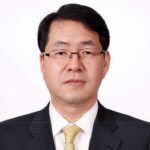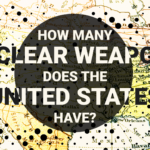A nuclear South Korea would be a mistake
By Jungmin Kang | April 1, 2016
Since North Korea conducted its fourth underground nuclear test on January 6, 2016, a number of prominent voices in South Korea, including some within the leadership of the ruling party and those at a major newspaper, have called for the nation to acquire nuclear weapons to balance those of the Kim regime to the north. Politicians and pundits have also renewed calls that South Korea be allowed to reprocess spent reactor fuel for plutonium, as Japan does, which would put the South in a position to produce nuclear weapons more quickly if it decided to become a nuclear-weapon state. (The practice is currently subject to an American veto.) Prime Minister Hwang Kyo-ahn has said that the country continues to seek the de-nuclearization of the whole peninsula despite such proposals, yet a recent poll showed that two-thirds of South Koreans support a nuclear deterrent against the North. Unfortunately, although efforts to curb Pyongyang’s nuclear program have thus far failed, if South Korea moved closer to a nuclear arsenal it would only make a bad situation worse.
The nuclear North. The 1994 Geneva Agreement between the United States and North Korea was designed to end North Korea’s nuclear weapons program. Pyongyang committed to freeze and eventually dismantle its Yongbyon nuclear facilities and, in exchange, Washington committed to provide two light-water reactors and various other economic and diplomatic rewards. The plan failed. Implementation faltered in October 2002, when North Korea was caught pursuing a clandestine uranium enrichment program, and the deal collapsed after North Korea expelled the IAEA inspectors from its Yongbyon nuclear complex in December 2002 and, in January 2003, withdrew completely from the Nuclear Non-Proliferation Treaty. Negotiations between the US and North Korea continued through the Six Party Talks, but those stopped in December 2008. Thus international efforts to de-nuclearize North Korea have (so far) failed, and Pyongyang’s program has continued to advance.
Unlike the South, North Korea has the nuclear infrastructure to produce both weapons-grade highly enriched uranium and weapons-grade plutonium. David Albright of the Washington-based Institute for Science and International Security has estimated that the North has produced hundreds of kilograms of enriched uranium using several thousand centrifuges, as well as about 30 kilograms of plutonium. Either of these materials can be used to create a nuclear weapon.
North Korea’s uranium-enrichment program was revealed to Siegfried S. Hecker of Stanford University during a visit to Yongbyon in November 2010. It is still uncertain how many centrifuges North Korea has built, or how much weapons-grade uranium it has produced, but Hecker estimated that, as of 2010, the Yongbyon enrichment facility hosted 2,000 centrifuges with an annual yearly capacity to produce roughly 40 kilograms of weapons-grade highly enriched uranium. That facility appears to have doubled in size since Hecker’s visit.
According to Albright, by the end of 2014, after its first three nuclear tests (in 2006, 2009, and 2013), North Korea still possessed 30–34 kilograms of weapons-grade plutonium, produced in the small graphite-moderated, gas-cooled reactor at Yongbyon and separated at the reprocessing plant nearby. Satellite images have shown the 20-megawatt reactor there operating intermittently since mid-2014; if it operated at full power for a year, it could produce 5–6 kilograms of plutonium in its spent fuel, or about the amount used in the Nagasaki bomb. The North has been building an experimental light water reactor next to the 20-megawatt one since 2010, but it is not expected to operate anytime soon.
After conducting its underground test in January, North Korea declared that it had successfully detonated a miniaturized hydrogen bomb. Seismic recordings suggest the blast had a yield in the range of 10 kilotons, about the same as North Korea’s previous test, which is believed to have been a fission bomb. A number of analysts have suggested that perhaps the test was of a miniaturized fission weapon whose fission yield had been “boosted” using neutrons from fusion of a few grams of tritium-deuterium gas. Such a device could serve as the primary charge used to ignite a secondary capsule containing fissionable and thermonuclear fuel, making it a true thermonuclear weapon. A compact boosted fission weapon also could serve as a light-weight warhead on the ballistic missile the North used to successfully launch a satellite in February.
The situation in the South. South Korea first became interested in plutonium separation, or spent fuel reprocessing, during the late 1960s, spurred in part by global concerns about potential shortages of uranium and proposals by the US Atomic Energy Commission to develop much more uranium-efficient plutonium breeder reactors. There was a more immediate motive as well, though. In 1970, with the Vietnam War turning into a quagmire, the United States began significantly reducing its military forces in South Korea. This shocked the government in Seoul, which immediately established two new defense agencies, the Agency for Defense Development and the Weapons Exploitation Committee. The latter voted unanimously in the early 1970s to proceed with the development of nuclear weapons.
As part of the same nuclear-weapon program, South Korea’s government began negotiations to purchase a pilot reprocessing plant from France, and in 1973, the government-funded Korea Atomic Energy Research Institute (KAERI) also began negotiating with Canada for the purchase of a copy of its NRX research reactor, which had originally been designed to produce plutonium for the US nuclear-weapons program. The institute also began negotiating with Belgium for the purchase of a mixed-oxide plutonium-uranium fuel fabrication facility, which would be required by a civilian plutonium-recycle program. After India used another NRX copy to produce plutonium for its first nuclear-weapons test in April 1974, however, the Canadian government halted negotiations with South Korea, and in January 1976, under strong pressure from Washington, Seoul also ended negotiations for the French reprocessing plant. The negotiations with Belgium ended in November 1977, again due to a US intervention. The clandestine nuclear weapons program apparently ended after the assassination of President Park Chung-hee in October 1979.
In August 2004, however, South Korea’s government publicly revealed that KAERI had secretly conducted chemical uranium enrichment experiments from 1979 to 1981, separated small quantities of plutonium in 1982, experimented with laser uranium enrichment in 2000, and manufactured depleted uranium munitions from 1983 to 1987. By not declaring any of these activities to the IAEA, South Korea had violated its Nuclear Nonproliferation Treaty safeguards agreement.
The experiments may have been conducted with no specific political or military oversight or direction, either from South Korea’s government or high-level policy makers, and South Korea had otherwise complied with IAEA safeguards (in place since Seoul joined the NPT in 1975). Nonetheless, the fact that KAERI scientists had enriched uranium and separated plutonium, even in secret from their superiors, may suggest an interest in a nuclear-weapon option.
In June 2015, the United States and South Korea signed a civil nuclear deal known as a 123 Agreement on Peaceful Uses of Nuclear Energy, replacing one established in 1974. Like the old deal, the new agreement gave Washington a veto over South Korea’s spent-fuel reprocessing.
After it reviews results of a joint study (lasting from 2011 to 2020) on the technical and economic feasibility and nonproliferation acceptability of pyroprocessing, the form of reprocessing currently advocated by KAERI, a bilateral US-South Korean commission could allow such operations in the South. Any such decision is a long way off, however. The 123 Agreement also allows for retransfer of South Korean spent fuel for reprocessing overseas—most likely in France—but with no return of separated plutonium. As far as I know, neither South Korea’s government nor its nuclear establishment are interested in this option. The new 123 Agreement also opens up the possibility of uranium enrichment in South Korea, but only for use as fuel in power and research reactors, and only, once again, after a review by the bilateral commission.
A dangerous temptation. Since the news of KAERI’s undeclared experiments in fall of 2004, South Korea’s nuclear establishment has been striving to increase the transparency of its nuclear power research and development activities. Meanwhile, the country has emerged as a player and a leader in the global nuclear industry. In 2009, the United Arab Emirates contracted with South Korea to build four of its nuclear power reactors, and in 2012 South Korea hosted the second Nuclear Security Summit.
Unfortunately, dangerous talk about acquiring nuclear weapons continues in the South. Two prominent professors of nuclear engineering argue that the country could build large numbers of nuclear weapons within 18 months using plutonium separated from spent fuel discharged from its Candu reactors. They argue that reprocessing this fuel would not require US consent but it would require Canadian consent.
For a country that has a record of secret nuclear programs, South Korea should understand how long it takes to build up credibility—and how easily it can be lost. If the South acquired nuclear weapons, it would inevitably provoke a nuclear arms race among China, Japan, and the two Koreas that would be almost impossible to reverse. It also would damage South Korea’s bilateral security arrangements with the United States. Such a scenario would most likely increase the probability of nuclear war in the region, ultimately leaving South Korea worse off with nuclear weapons than without them.
The better course would be for the government in Seoul to continue its current policy of sheltering under the nuclear “umbrella” provided by Washington while working toward a de-nuclearized Korean Peninsula as well as preserving a nuclear-weapons-free Japan. With the stability of the region and the credibility of the country’s peaceful nuclear program at risk, South Korea’s government—specifically President Park Geun-hye—should go beyond the prime minister’s remarks and unequivocally denounce proposals for a South Korean nuclear deterrent that would only make a bad situation worse.
Together, we make the world safer.
The Bulletin elevates expert voices above the noise. But as an independent nonprofit organization, our operations depend on the support of readers like you. Help us continue to deliver quality journalism that holds leaders accountable. Your support of our work at any level is important. In return, we promise our coverage will be understandable, influential, vigilant, solution-oriented, and fair-minded. Together we can make a difference.
Topics: Analysis, Nuclear Weapons















